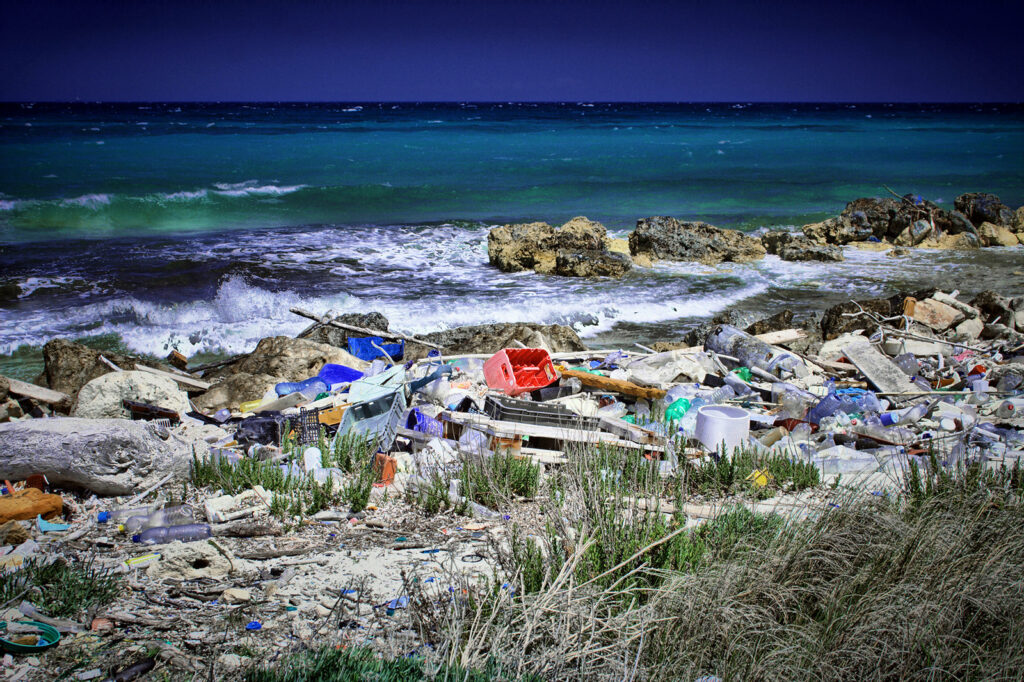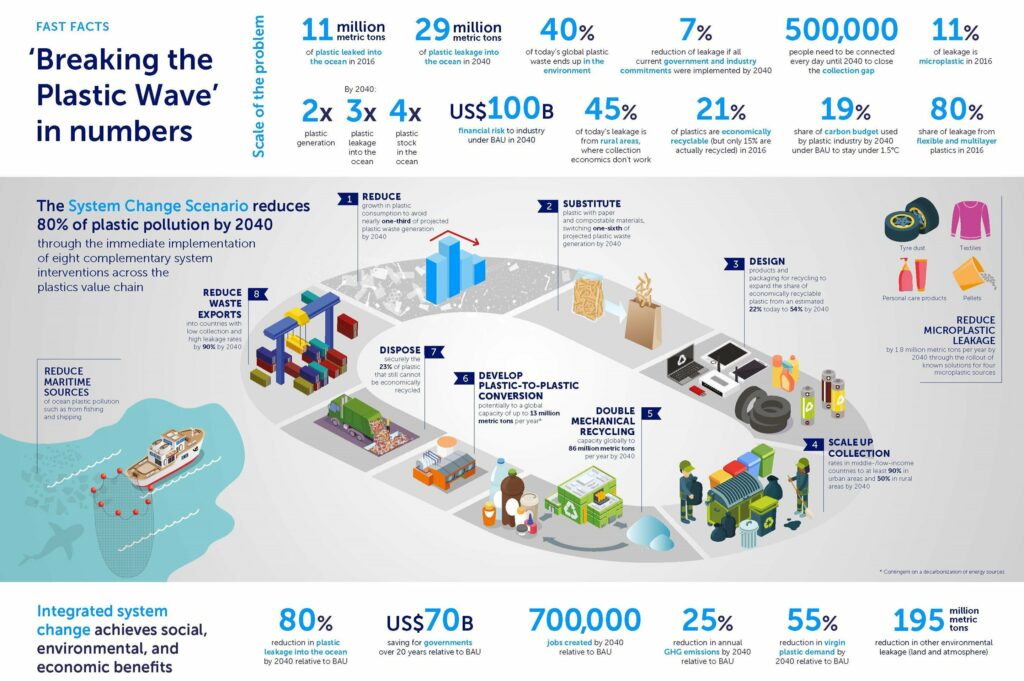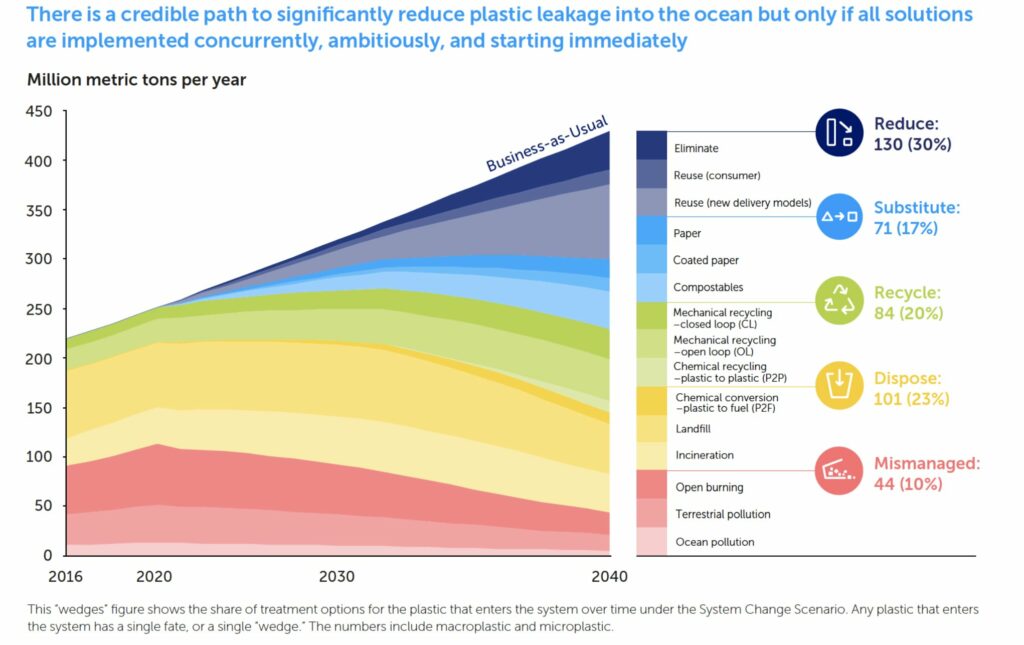About 1.3 billion tons of plastic will be dumped into our environment by 2040, both on land and in the ocean, according to a global model of the scale of the plastic problem.
There’s still room to improve things, and researchers call for drastic cuts to the flow of plastic waste, proposing several methods that could help.

Bad news aplenty
A new model developed by a group of researchers from the University of Leeds suggests that 710 million tons of plastic waste will be discarded into the environment by 2040, even with immediate and significant recycling efforts. Roughly 460 million tons will end up on land on land and 250 million tons in watercourses.
This shows the true impact of society’s reliance on plastic, especially single-use and film plastics that are used for packaging. Stopping its flow is crucial, as most of the plastic enters the ocean basically stays there forever, breaking down into microplastics. The techniques developed to clean the ocean so far have been tentative or straight up unsuccessful.
“This scientific inquiry has for the first time given us a comprehensive insight into the staggering amounts of plastic waste that are being dumped into the world’s terrestrial and aquatic ecosystems. We now have a much clearer picture,” said Dr. Costas Velis, the lead investigator, in a press release.
Velis and colleagues tracked the production, use, and disposal of plastic around the world. They created a model to forecast future plastic pollution, using different scenarios. The “business as usual” scenario, based on the current trend of increasing plastic pollution, produced the 1.3 billion tons estimate by 2040. The model suggests that about 95% of the plastic packaging is only used once before being dumped. The main source of plastic pollution reported by the researchers was an uncollected solid municipal waste, coming from households. A quarter of all plastic waste is currently never collected, leaving individuals to dispose of it themselves.

The researchers also highlighted the large amount of plastic that is openly burnt. This is a bittersweet solution, as it reduces the amount of waste but it generates other problems, releasing toxic fumes into the atmosphere and contributing to greenhouse gas emissions. The model estimated that between two and a quarter billion tons of plastic waste will be burned between 2016 and 2040. That is more than twice the amount that projected to be dumped on land and oceans and rivers, according to the findings.
Ed Cook, one of the authors of the study, said that while modern incinerators emit only a few hazardous substances, open burning can lead to a range of negative health consequences.
“Those obnoxious substances are being breathed in by people who are working with waste and also in the communities that live nearby,” Cook said in a press release. “Burning is a double-edged sword. It reduces the amount of plastic that could eventually end up in the seas and on land but it also poses many other environmental problems, including a significant contribution to global warming.”
Possible solutions
While looking at the current and future scenario, the study also took a look at possible solutions to the plastic problem. The study concluded that changing waste collection services is the main factor that could reduce pollution. Around two billion people in the world do not have access to a waste collection service, according to UN estimates.
“In the absence of collection services, people have to make difficult choices about how to manage the waste themselves by openly burning it, dumping it on land, or putting it directly into rivers and coastal waters,” Dr. Velis said. “Waste collection is indeed the most effective way to prevent pollution.”

The researchers looked at various paths to tackle plastic pollution, using six different scenarios, gradually improving from ‘business as usual’ to substantial recycling improvements at multiple levels. While none were sufficient, if they are brought together they could reduce the plastic flow to the oceans by 80% for 2040, the study showed. This can be done using already existing technology and know-how.
Dealing with such a big problem would involve reducing growth in plastic production and consumption, substituting plastic with paper and compostable materials, designing products and packaging for recycling, and expanding waste collection, among other paths.
While in high-income countries the focus should be to decrease plastic consumption and improve product design and recycling in low-to-middle income economies, the push should be on improving waste collection and investments in sorting and recycling, the scientists argued.
“There is not one single solution. We can’t simply say we’re going to recycle everything or use less material, we need to take a holistic approach and look at the whole system. Although the report looks at the flows of plastic waste into the oceans, the benefits will extend far beyond the marine environment,” said Cook.
The study was published in the journal Science.
Was this helpful?



